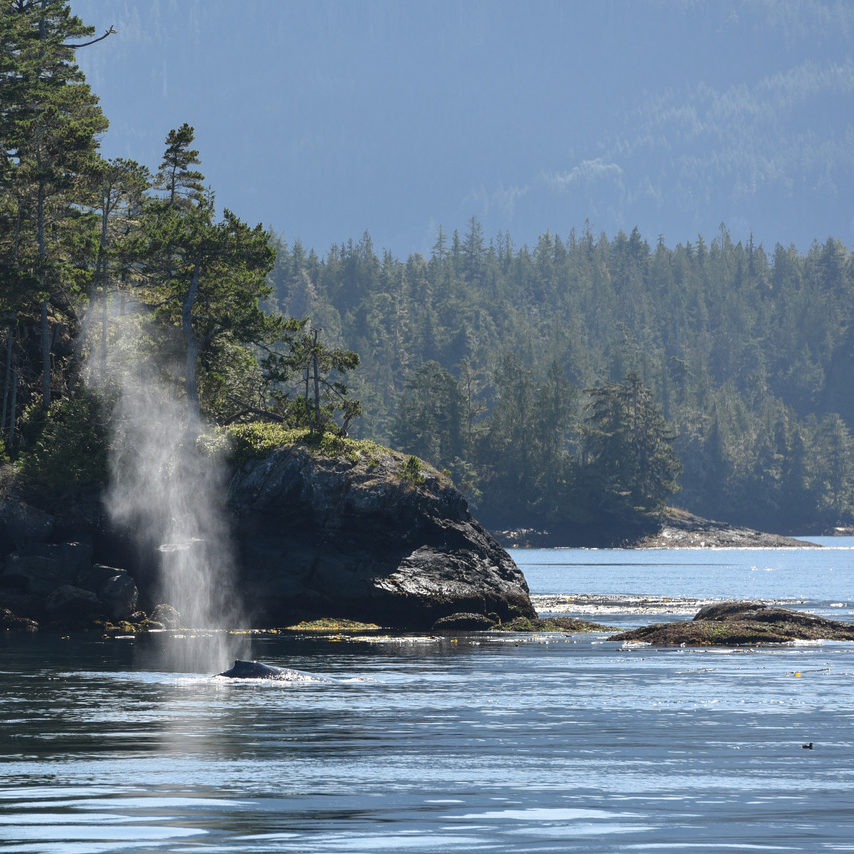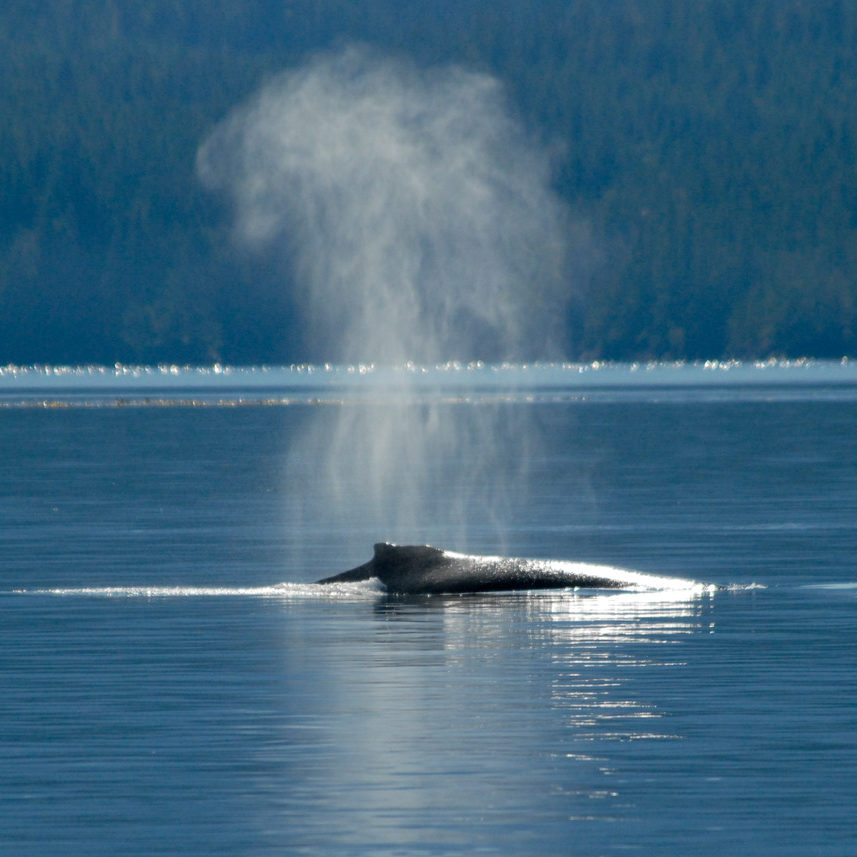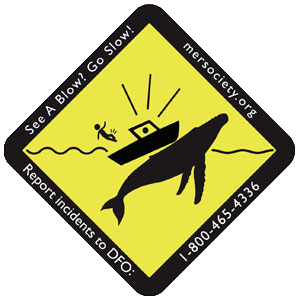Regulations and Guidelines for Other Cetaceans
The Salish Sea is home to many different cetaceans including humpback whales, minke whales, porpoises and more. These marine mammals are protected by regulations in Canada and the U.S. which prohibit harassment and disturbance. Many species are threatened or endangered and subject to additional protections under the Endangered Species Act (U.S.) and the Species at Risk Act (Canada).
United States Marine Mammal Regulations
Marine mammals including cetaceans are protected in US waters under the Marine Mammal Protection Act (MMPA), with additional protection provided to endangered and threatened species under the Endangered Species Act (ESA).
These regulations prohibit take, which is defined as harassing, hunting, capturing, killing, or attempting to harass, hunt, capture or kill any marine mammal.
In the inland waters of Washington state, you must:
- Maintain 200 yards minimum distance if the whale is a Bigg’s Transient killer whale.
You should also:
- Maintain 100 yards minimum distance from whales including dolphins and porpoises.
- Do not approach a marine mammal to feed it, swim/interact with it, move it or entice it to move from its immediate vicinity, separate it from members of its group, or trap it between a vessel and the shore or between a vessel and one or more other vessels.

Canadian Marine Mammal Regulations

The Canadian Marine Mammal Regulations were amended in 2018 and require the following to avoid disturbance to marine mammals. Threatened and endangered species are additionally protected under the Species At Risk Act (SARA).
- Maintain a minimum approach distance of:
- 400 metres from all killer whales in southern BC coastal waters between Campbell River and just north of Ucluelet*
- 200 metres away from all killer whales in Canadian Pacific waters other than those described above
- 200 metres away from all whales, porpoises and dolphins when in resting position or with a calf
- 100 metres for other whales, porpoises and dolphins
- Do not approach a marine mammal to feed it, swim/interact with it, move it or entice it to move from its immediate vicinity, separate it from members of its group, or trap it between a vessel and the shore or between a vessel and one or more other vessels.
*Vessels must stay 400m away from all killer whales in southern BC coastal waters between Campbell River and just north of Ucluelet until May 31, 2024, as per the Interim Order enacted under the Canada Shipping Act.
The Marine Mammal Regulations also require reporting of any accidental contact between marine mammals and a vehicle or fishing gear to DFO (1-800-465-4336 or DFO.ORR-ONS.MPO@dfo-mpo-gc.ca). Learn more about the Canadian Marine Mammal Regulations here.
See a Blow? Go Slow!
The Marine Education & Research Society (MERS) of Canada has created a campaign to provide further information about how to avoid collisions with marine mammals called “See A Blow? Go Slow!” This reminds boaters to slow down whenever you see a blow, or whale spout, and stay extra vigilant to see what direction the animals are traveling and how to best position their vessel to maintain a safe distance from the whales and still enjoy the view.
There has been a very fortunate increase in the number of Humpback Whales off our coast. The size and unpredictability of large whales like Humpbacks significantly increases the risk of collision and injury to both whales and boaters. Humpback also have a high risk of entanglement.
Key Points for boater safety regarding large whales:
- Always be on the lookout for blows and other indicators of whale presence such as aggregations of birds (the presence of birds often means there is a lot of feed and thereby an enhanced chance of whale presence).
- Watch for vessels flying the Whale Warning Flag. This signals that whales are near.
- Increase vigilance in areas of known whale density.
- Do not position beside “bait balls” of small schooling fish (as indicated by aggregations of birds).
When you suspect you are in the vicinity of large whales:
-
- Slow down. Speed should not be more than 7 knots when within 200 to 400 metres/yards of the whale(s).
- Give the whale(s) space. Do not approach large whales within 200 metres/yards.
- If whales surface within 200 metres/yards of your vessel, place engine in neutral (or ideally shut off the engine) until the whales are beyond 200 meters / yards.
- If kayaking, raft up.
- When viewing marine mammals from the air using a drone: (1) maintain a 1,000-foot minimum altitude within a 0.5 nautical mile (approx. 3,000ft radius) of a marine mammal; and(2) avoid flight maneuvers around marine mammals (on land or in the water), as these actions may cause stress or alter animal behavior.
If you experience or witness a collision or other incident of concern such as entanglement or disturbance:
- Report it. If in British Columbia, call the DFO Incident Reporting Line at 1-800-465-4336 or VHF Channel 16. If in the US, call the NOAA Reporting Hotline at 1-877-SOS–WHAL or 1-877-767-9425 or VHF Channel 16. Note that it is the law that entanglement and collision must be reported.
- If possible, without getting closer than 200 metres/yards or further stressing the whale, get photos that show the injury / entanglement and allow the whale to be identified as an individual (dorsal fin and / or tail photos).
- For the safety of yourself and the whale, DO NOT attempt to disentangle the whale.
For further detail on what to do (and NOT to do) regarding whale entanglement, please see “How to Save a Whale”.


Trans-Boundary Guidelines for the US and Canada
Apply to all whales, porpoises, dolphins, seals, sea lions, any animal hauled out and nesting birds.
- DO NOT APPROACH or position your vessel closer than 100 metres/yards to any other marine mammals or birds, whether on the water or on land.
- BE CAUTIOUS, COURTEOUS and QUIET when around areas of known or suspected marine wildlife activity, in the water or at haul-outs and bird colonies on land. Especially from May to September during breeding, nesting and seal pupping seasons.
- LOOK in all directions before planning your approach or departure from viewing wildlife.
- SLOW DOWN: reduce speed to less than 7 knots when within a half mile or 1000 metres/yards of the nearest marine mammal and reduce your engine’s noise and vessel’s wake.
- ALWAYS approach and depart from the side, moving parallel to their direction of the animal’s travel. If the animal(s) are approaching you, cautiously move out of the way and avoid abrupt course changes. DO NOT approach from the front or from behind.
- IF your vessel is not in compliance with the 100 metres/yards approach guideline (#1), place engine in neutral and allow animals to pass.
- PAY ATTENTION and move away, slowly and cautiously at the first sign of disturbance or agitation from any animal.
- STAY on the OFFSHORE side of the whales when traveling close to shore.
- ALWAYS avoid going through groups of porpoises or dolphins and hold course and reduce speed gradually to discourage bow or stern-riding.
- LIMIT your viewing time to 30 minutes or less. This will reduce the cumulative impact of all vessels and give consideration to other viewers.
- DO NOT disturb, swim with, move, feed or touch any marine wildlife. If you are concerned about a potentially sick, stranded animal, or entangled animal, contact your local stranding network.
The noise and close proximity of unmanned aerial vehicles (UAV)/drones can disturb wildlife in the water or on land. Drones can disturb marine mammals, so are discouraged for viewing marine mammals unless appropriate permits are obtained. To prevent disturbances from an unmanned aerial vehicle (UAV/drone) over the marine environment, operators must use extreme caution. Fly during daylight hours, keep your drone in sight and limit your viewing time to reduce the cumulative impact.
If viewing marine mammals from the air using a drone:
(1) maintain a 1,000-foot minimum altitude within a 0.5 nautical mile (approx. 3,000ft radius) of a marine mammal;
(2) avoid flight maneuvers around marine mammals (on land or in the water), as these actions may cause stress or alter animal behavior. Operators should note applicable US FAA regulations and Canadian Aviation Regulations for the airspace in which they are operating.
Know and follow all local regulations – although these rules are technically guidelines in the US, in Canada it’s the law.
